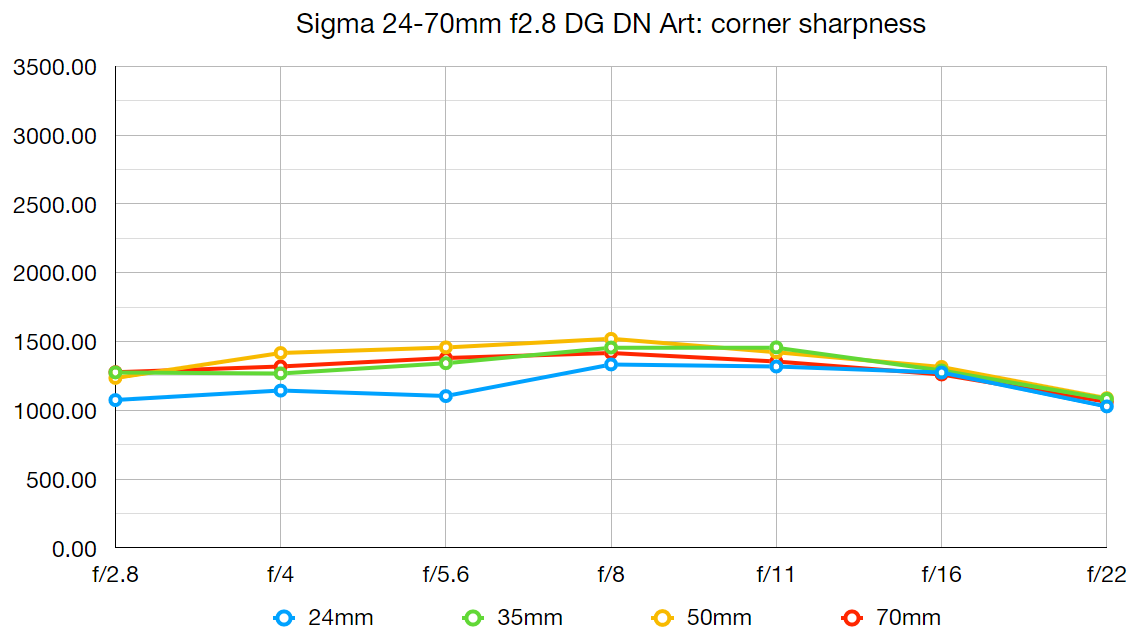Digital Camera World Verdict
Buy a full-frame mirrorless camera from Sony or Panasonic and you’ll probably be tempted by the FE 24-70mm f/2.8 G Master or Lumix S PRO 24-70mm f/2.8. They’re both fully pro-grade lenses with price tags to match. For those without bottomless pockets, there’s good news in that Sigma has reinvented its highly acclaimed 24-70mm Art lens for SLRs, serving up a similarly sumptuous standard zoom in both Sony E and Leica L mount, but for about half the price.
Pros
- +
Superb build quality and handling
- +
High-tech optical design
- +
Super-fast, silent autofocus
Cons
- -
Typically big and heavy for an f/2.8 zoom
- -
Noticeable distortion and vignetting when uncorrected
Why you can trust Digital Camera World
Sigma set about putting one over on Canon and Nikon, designing a pro-grade 24-70mm f/2.8 Art-line zoom that was every bit as good as own-brand optics (arguably even better) at a much more affordable price.
The company has now launched a 24-70mm f/2.8 Art lens for mirrorless full-frame Sony cameras – as well as for L-mount cameras made by Panasonic, Leica and Sigma. But it’s not just a tweak of the SLR-fit lens, shoehorned into a more mirrorless-friendly format. Instead, the new lens is completely redesigned and boasts some very up-market attractions.
Specifications
Mount: Sony E, L-mount
Full frame: yes
Autofocus: yes
Lens construction: 19 elements in 15 groups
Angle of view: 84-34 degrees
Diaphragm blades: 11
Minimum aperture: f/22
Minimum focusing distance: 0.18-0.38cm
Maximum magnification ratio: 0.34-0.22x
Filter size: 82mm
Dimensions: 88x125mm
Weight: 835g
Key features
The ‘DN’ edition of Sigma’s 24-70mm Art lens is the same width but slightly longer than the SLR equivalent. Even so, it’s about 200g lighter in weight and less of a handful, tipping the scales at 830g in Sony mount and 835g in L-mount. That makes it slightly lighter than the own-brand Sony and Panasonic lenses. The diameter is about the same and all three lenses have an 82mm filter thread.
Whereas Sigma’s SLR and mirrorless compatible lenses both have 19 elements in total, the SLR version incorporates four aspherical elements and three SLD (Special Low Dispersion) elements. The new mirrorless edition really ups the game, with no less than six top-grade FLD (‘Fluorite’ Low Dispersion) elements and two SLD elements. The aspherical element count drops from four to three. Both lenses feature Sigma’s proprietary Super Multi-Layer Coating but, again, the DN lens goes the extra mile by adding an extra newly-designed Nano Porous Coating to further reduce ghosting and flare. The diaphragm blade count goes up from nine to eleven, ensuring that the aperture remains extremely well-rounded when stopping down.
The ring-type ultrasonic autofocus motor of the SLR lens is replaced with a stepping motor. Typical of this kind of system, manual override and fully manual focusing come courtesy of an electronically coupled, ‘fly-by-wire’ focus ring. As usual, there’s no physical focus distance scale. The new lens also omits the optical stabilizer fitted to the SLR version, instead relying on in-body stabilization featured in current and recent Panasonic and Sony full-frame mirrorless cameras.
Build and handling
Build quality feels of a consummately professional-grade standard, from the brass mounting plate to the grippy rubberised hood. Several weather-seals are fitted throughout. There’s a zoom lock switch, although our review sample didn’t suffer from any zoom creep whatsoever, and a locking button on the hood, which is absent on the SLR version of the lens.
The best camera deals, reviews, product advice, and unmissable photography news, direct to your inbox!
Further switches and buttons include an AF/MF toggle switch and an AF-L (autofocus lock) button, which can be customised to carry out different functions, depending on camera type and model. The zoom and focus rings themselves are reversed, compared to the SLR-style lens, so that the zoom ring is positioned at the rear and the focus ring is larger and fitted at the front.
Performance & image quality

In-camera corrections turned off
This pair of shots demonstrates the difference that Sony’s in-camera auto corrections have on vignetting and distortion at 24mm, f/2.8

In-camera corrections turned on
This pair of shots demonstrates the difference that Sony’s in-camera auto corrections have on vignetting and distortion at 24mm, f/2.8
Autofocus is very quick, essentially silent in operation and proved unerringly accurate in our tests of the Sony-mount edition of the lens. Manual override operates with smooth precision and the customisable AF-L button is a further bonus. A bonus of the DN lens is that the minimum focus distance at the wide-angle end of the zoom range is much shorter. So much so, in fact, that you have to remove the hood to take full advantage.
Sharpness and contrast are excellent even when shooting wide-open, throughout the entire zoom range. At f/2.8, however, vignetting (darkened image corners) is quite noticeable and there’s hefty, moustache-shaped barrel distortion at the short end of the zoom range. This makes it difficult to correct the distortion manually, but both peripheral illumination and distortions can be automatically corrected in-camera and via raw file conversion. Resistance to ghosting and flare is very good indeed.

24mm setting
The classic 24-70mm zoom range gives generously wide-angle to short telephoto perspectives, as demonstrated by these two shots

70mmmm setting
The classic 24-70mm zoom range gives generously wide-angle to short telephoto perspectives, as demonstrated by these two shots

Shot at f/2.8
Helped by the extremely well-rounded 11-blade diaphragm, bokeh remains nice and smooth when narrowing the aperture from f/2.8 to f/4, as shown in these two shots

Shot at f/4
Helped by the extremely well-rounded 11-blade diaphragm, bokeh remains nice and smooth when narrowing the aperture from f/2.8 to f/4, as shown in these two shots
Lab data
Sharpness:
Centre-frame sharpness is outstanding at all focal lengths and apertures. Corner sharpness isn't quite so impressive, but it's consistently good at all apertures, with the only dip being at 24mm at larger apertures.
Fringing:
Lateral chromatic aberration is impressively well controlled accross the board. You're very unlikely to spot any fringing when shooting with this lens at any focal length or aperture.
Distortion:
The Sigma 24-70mm f/2.8 DG DN Art produces moderate barrel distortion at 24mm, transitioning to pincushion at 50mm and beyond. The degree of distortion is enough to be visible when shooting geometric subjects, but is only obvious at 24mm, and it's not difficult to correct this in raw processing software.
Verdict
The build quality and handling of Sigma’s new 24-70mm Art lens for mirrorless cameras is top-notch. It feels really robust without being overly heavy, and has refined handling in every area, from the smooth-action zoom and focus rings to the various buttons and switches. Autofocus is super-fast, deadly accurate and virtually silent.
Like many new lenses for mirrorless cameras, however, it’s not optically perfect and takes advantage of in-camera corrections for the likes of distortion and vignetting. But almost all zoom lenses will require some degree of in-camera corrections to reach peak performance.
What really matters is Sigma's new 24-70mm Art E-mount lens really delivers the goods and is terrific value at the price.
Read more
Matthew Richards is a photographer and journalist who has spent years using and reviewing all manner of photo gear. He is Digital Camera World's principal lens reviewer – and has tested more primes and zooms than most people have had hot dinners!
His expertise with equipment doesn’t end there, though. He is also an encyclopedia when it comes to all manner of cameras, camera holsters and bags, flashguns, tripods and heads, printers, papers and inks, and just about anything imaging-related.
In an earlier life he was a broadcast engineer at the BBC, as well as a former editor of PC Guide.









